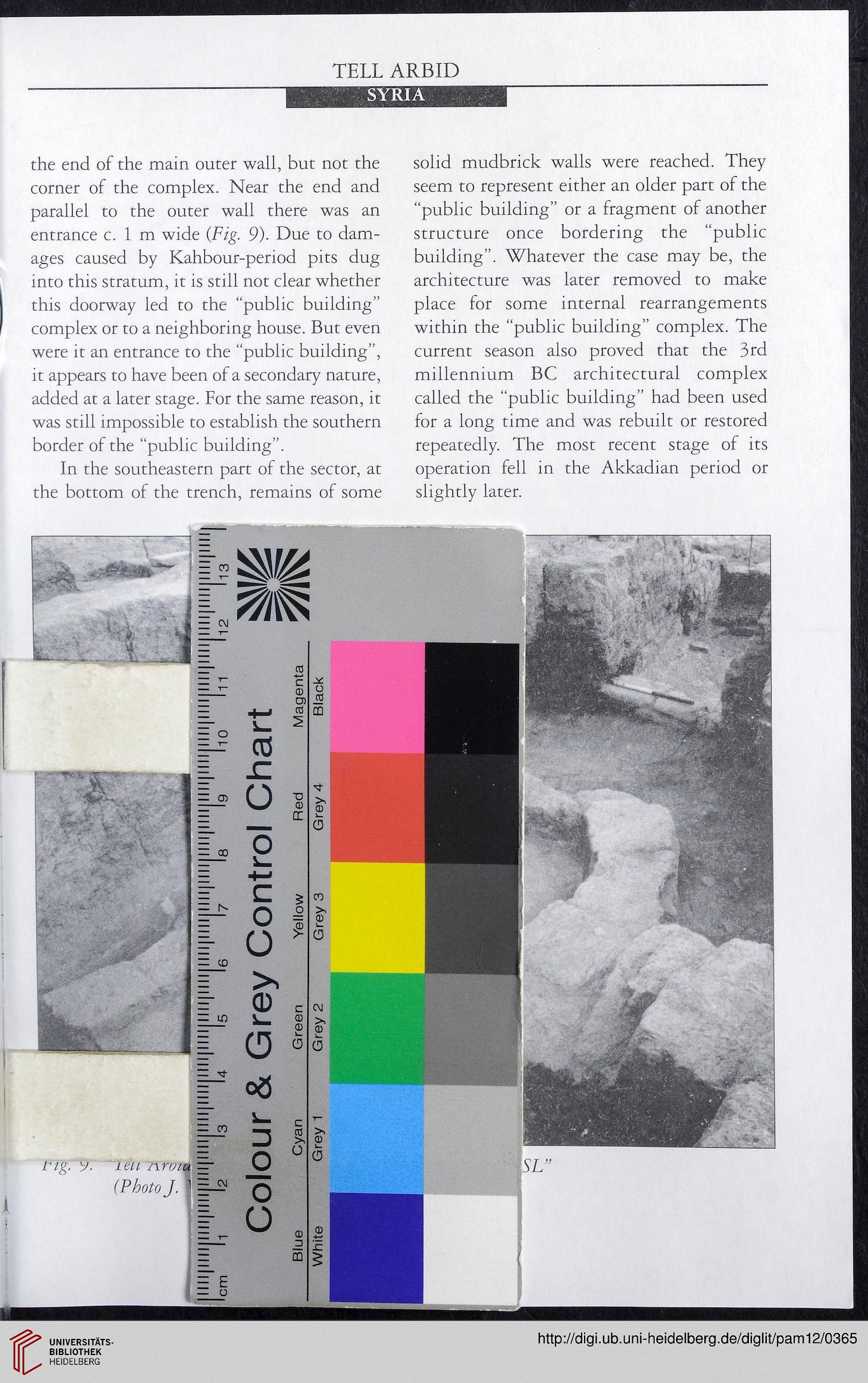Note: This is an additional scan to display the colour reference chart and scalebar.
0.5
1 cm

SYRIA_]
TELL ARBID
the end of the main outer wall, but not the
corner of the complex. Near the end and
parallel to the outer wall there was an
entrance c. 1 m wide (Fig. 9). Due to dam-
ages caused by Kahbour-period pits dug
into this stratum, it is still not clear whether
this doorway led to the “public building”
complex or to a neighboring house. But even
were it an entrance to the “public building”,
it appears to have been of a secondary nature,
added at a later stage. For the same reason, it
was still impossible to establish the southern
border of the “public building”.
In the southeastern part of the sector, at
the bottom of the trench, remains of some
solid mudbrick walls were reached. They
seem to represent either an older part of the
“public building” or a fragment of another
structure once bordering the “public
building”. Whatever the case may be, the
architecture was later removed to make
place for some internal rearrangements
within the “public building” complex. The
current season also proved that the 3rd
millennium BC architectural complex
called the “public building” had been used
for a long time and was rebuilt or restored
repeatedly. The most recent stage of its
operation fell in the Akkadian period or
slightly later.



